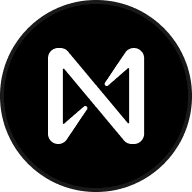Near Protocol-koers
in EUROver Near Protocol
Disclaimer
OKX geeft geen beleggings- of vermogensadvies. Je moet zorgvuldig overwegen of het verhandelen of bezitten van digitale bezittingen voor jou geschikt is in het licht van je financiële toestand. Raadpleeg je juridische, fiscale of beleggingsadviseur als je vragen hebt over je specifieke situatie. Raadpleeg voor meer informatie onze Gebruiksvoorwaarden en Risicowaarschuwing. Door gebruik te maken van de website van derden ('TPW'), ga je ermee akkoord dat elk gebruik van de TPW onderworpen is aan en beheerst wordt door de voorwaarden van de TPW. Tenzij uitdrukkelijk schriftelijk vermeld, zijn OKX en haar partners ("OKX") op geen enkele manier verbonden met de eigenaar van de exploitant van de TPW. Je gaat ermee akkoord dat OKX niet verantwoordelijk of aansprakelijk is voor verlies, schade en andere gevolgen die voortvloeien uit jouw gebruik van de TPW. Houd er rekening mee dat het gebruik van een TPW kan leiden tot verlies of vermindering van je bezittingen. Het product is mogelijk niet in alle rechtsgebieden beschikbaar.
Prijsprestaties van Near Protocol
Handleidingen

Maak een gratis OKX-account aan.
Stort geld op je account.
Kies je crypto.
Near Protocol op OKX Learn
Near Protocol Veelgestelde vragen
Near Protocol is een geavanceerd Layer 1-blokchainnetwerk, bekend om zijn schaalbaarheid en snelle transacties, dankzij het shardingmechanisme.
Near Protocol bevat sharding, een techniek die het netwerk verdeelt in kleinere delen (of shards), waardoor de transactiesnelheid en de algehele netwerkprestaties worden geoptimaliseerd.
Eenvoudig NEAR-tokens kopen op het OKX-cryptovalutaplatform. Beschikbare handelsparen in de OKX-spothandelstermine zijn onder meerNEAR/BTC,NEAR/USDCenNEAR/USDT.
Je kunt ook NEAR kopen met meer dan 99 lokale valuta door de "Snel kopen" optie. Andere populaire cryptotokens, zoalsBitcoin (BTC),Ethereum (ETH),Tether (USDT), enUSD Coin (USDC), zijn ook beschikbaar.
Daarnaast kun je je bestaande cryptovaluta swappen, waaronderXRP (XRP),Cardano (ADA),Solana (SOL), enChainlink (LINK), voor NEAR zonder vergoedingen en zonder prijsverschuiving door gebruik te maken vanOKX Convert.
Bezoek om de geschatte realtime conversieprijzen tussen lokale valuta's, zoals de USD, EUR, GBP en anderen, in NEAR, te bekijkenRekenmachine voor OKX cryptoconverteerder. De crypto-uitwisseling met hoge liquiditeit van OKX zorgt voor de beste prijzen voor je crypto-aankopen.
Duik dieper in Near Protocol
V roce 2020 zaznamenal sektor decentralizovaných financí (DeFi) výrazný růst, což vedlo k prudkému nárůstu decentralizovaných aplikací (dApps) v síti Ethereum. Tento nárůst zdůraznil některé problémy se škálovatelností Etherea a poukázal na nutnost robustnějšího řešení. V reakci na tuto potřebu vznikl Near Protocol jako komunitně orientovaná cloudová výpočetní platforma, jejímž cílem je tato omezení zmírnit.
Co je Near Protocol
NEAR je komunitně orientovaná platforma cloud computingu, která využívá konsensuální mechanismus Proof of Stake (PoS). Díky uživatelsky přívětivému rozhraní a možnostem inteligentních smluv se NEAR snaží umožnit vývojářům bez námahy navrhovat a nasazovat inovativní dApps a DeFi řešení. Jeho jedinečný design navíc umožňuje uživatelům zapojit se do dApps a chytrých smluv, aniž by potřebovali peněženku.
Tým Near Protocol
Erik Trautman, podnikatel pyšnící se zkušenostmi z Wall Street a zakladatel společnosti Viking Education, je průkopníkem projektu NEAR. Spolu s ním jsou spoluzakladateli Illia Polusukhin, bývalý zaměstnanec společnosti Google, a Alexander Skidanov, bývalý zaměstnanec Microsoftu. Pod jejich vedením se v NEARu sešla zkušená skupina vývojářů, mezi nimiž jsou zlatí medailisté z mezinárodní soutěže v programování.
Jak Near Protocol funguje
Protokol NEAR využívá technologii shardingu a zvyšuje rychlost a objem transakcí. Díky rozdělení výpočetní zátěže mezi více oddílů každý uzel spouští pouze relevantní kód pro jemu přidělený oddíl, čímž se optimalizuje škálovatelnost. Blockchainový operační systém (BOS) NEAR, založený na JavaScriptu, zajišťuje, že vývojáři mohou používat známý programovací jazyk. Platforma poskytuje hotové komponenty, což usnadňuje rychlejší vývoj produktů. Uživatelé navíc mohou k systému rychle přistupovat, aniž by museli vlastnit nebo používat kryptoměnu.
NEAR tokenomika
Nativní token NEAR, NEAR, byl spuštěn 13. října 2020 s celkovou nabídkou 1 miliardy tokenů. Token nabízí několik případů použití, od placení transakčních poplatků za plyn až po sázky za odměny. Kromě toho hraje roli při správě, ukládání dat a přístupu ke službám a aplikacím na protokolu Near.
Distribuce NEAR
NEAR byl distribuován následujícím způsobem:
- 17,2 %: Komunitní granty a programy
- 15,23 %: Počáteční kolo
- 14 %: Hlavní přispěvatelé
- 11,76 %: Vývoj ekosystému v rané fázi
- 11,4 %: Provozní granty
- 12 %: Prodej ve Společenství
- 10 %: Nadace
- 8,41 %: Rizikové kolo
Blízký protokol: Cesta vpřed
Protokol NEAR, vytvořený s ohledem na robustnost a efektivitu, nabízí platformu bez zprostředkovatelů, která uživatelům umožňuje nezávisle publikovat a hostovat aplikace. Tento závazek k pokroku se odráží v jejich oznámení za 3. čtvrtletí 2023, které ohlašuje 2. fázi shardingu, jež má vylepšit proces shardingu a zlepšit škálovatelnost.


































